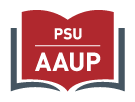Slate
October 16th, 2014
The blackboard is a recent innovation. Erasable slates, a cheap but durable substitute for costly paper and ink, had been in use for centuries. Students could practice reading and writing and math on their slates, in the classroom or at home. But it wasn’t until 1800 that James Pillans, headmaster of the Old High School of Edinburgh, Scotland, wanting to offer geography lessons to his students that required larger maps, connected a number of smaller slates into a single grand field. And in 1801, George Baron, a West Point mathematics teacher, also began to use a board of connected slates, the most effective way, he found, to illustrate complex formulas to a larger audience.
Although the term blackboard did not appear until 1815, the use of these cobbled-together slates spread quickly; by 1809, every public school in Philadelphia was using them. Teachers now had a flexible and versatile visual aid, a device that was both textbook and blank page, as well as a laboratory, and most importantly, a point of focus. The blackboard illustrates and is illustrated. Students no longer simply listened to the teacher; they had reason to look up from their desks.
